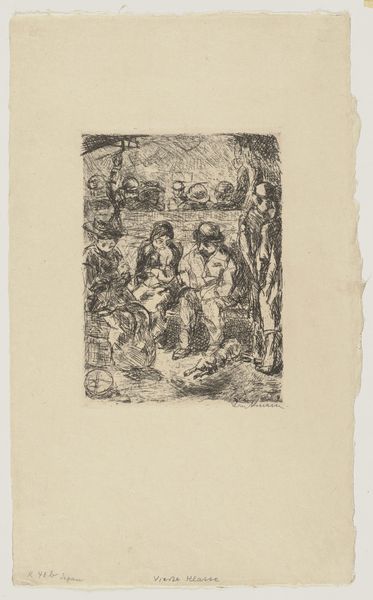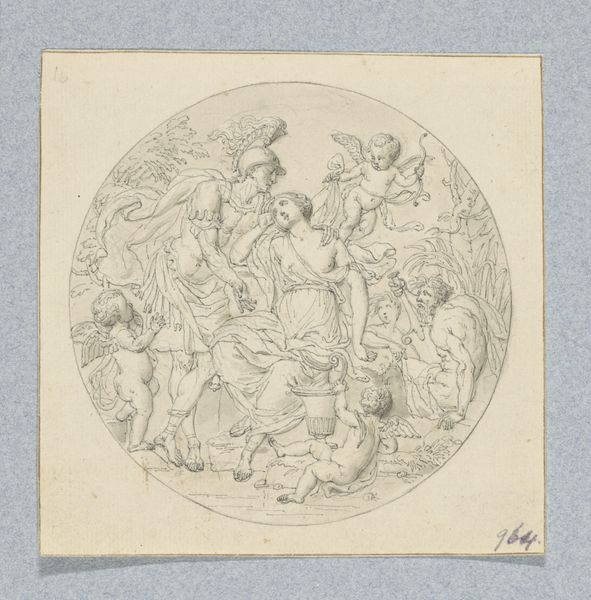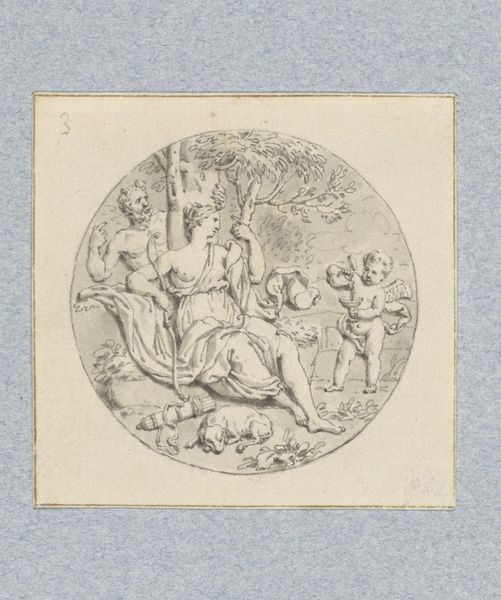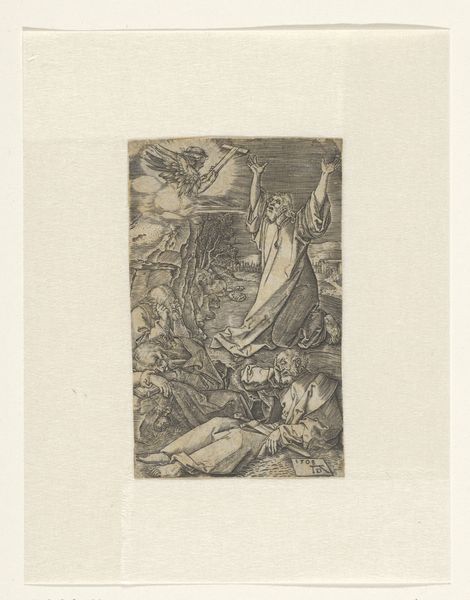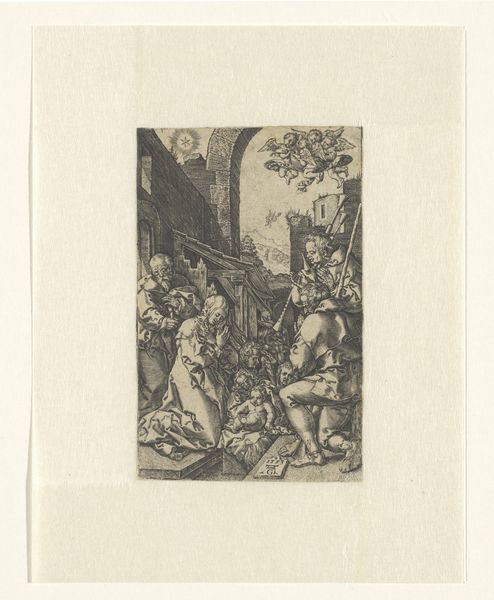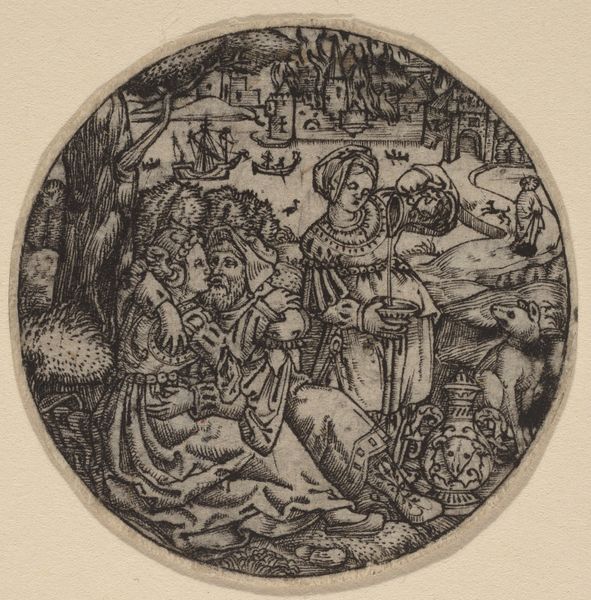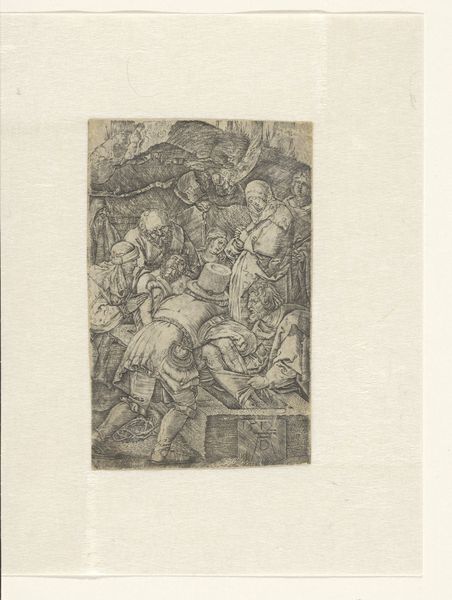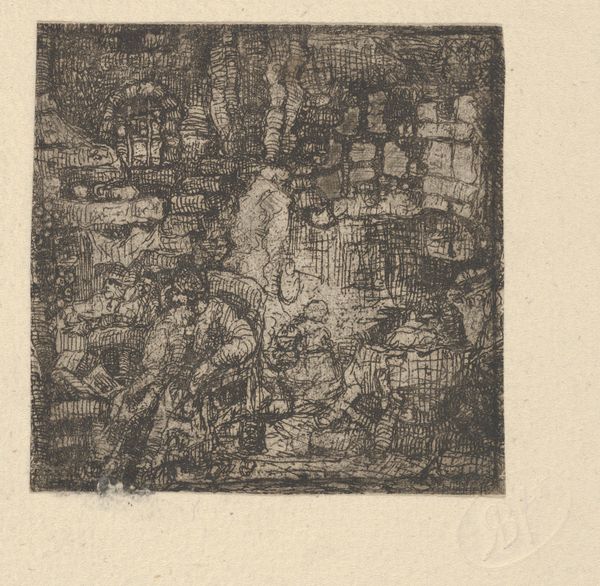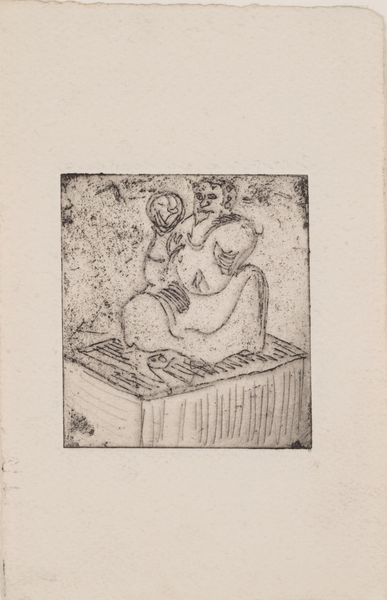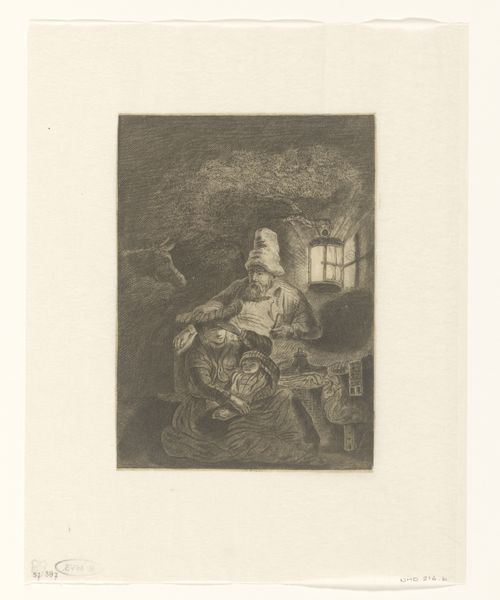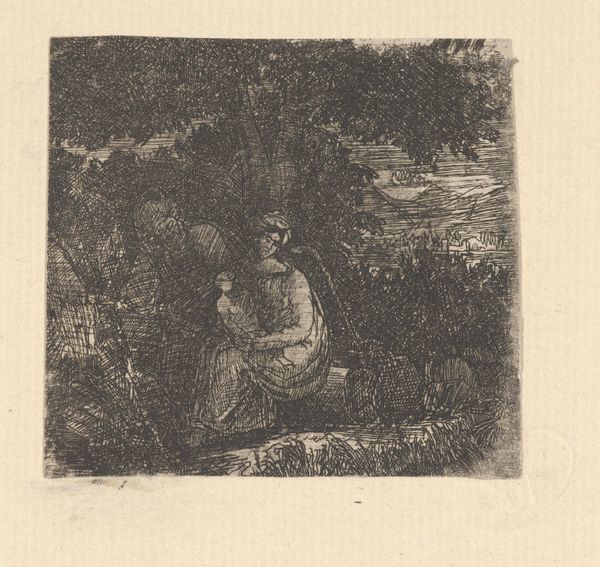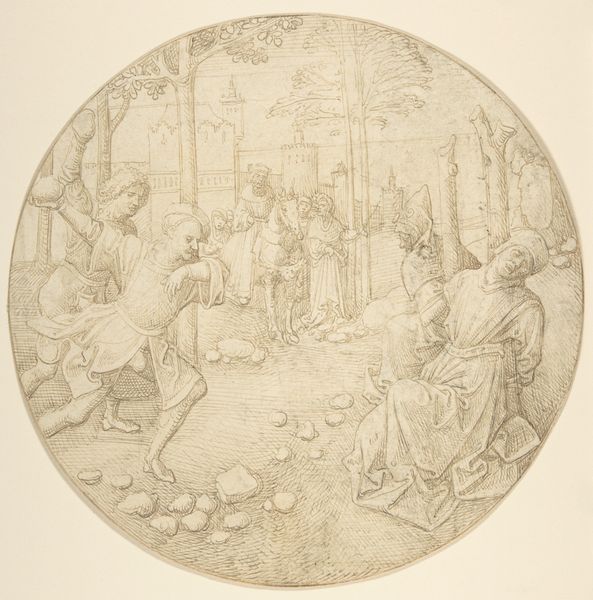
drawing, print, etching, paper, ink, engraving
#
drawing
#
ink drawing
# print
#
etching
#
landscape
#
etching
#
figuration
#
paper
#
ink
#
history-painting
#
engraving
Dimensions: 278 × 380 mm (plate); 154 × 200 mm (sheet)
Copyright: Public Domain
Editor: Here we have Aristide Maillol’s "Tapisserie" from 1895, rendered in ink on paper through etching and engraving. It reminds me of something ancient, like a frieze fragment pulled from a wall. What first strikes you about this piece? Curator: It immediately conjures echoes of classical Greece. Notice the arrangement of the figures; the tapestry-like border containing a scene… the simplified, flowing lines… All evoke a specific sense of idealized beauty, harmony, and order. How do you think Maillol employs this classical imagery? Editor: Well, the figures, draped in what looks like classical garb, are posed serenely. There's an overall calmness. Yet, framing it as a "tapestry" adds a layer, doesn't it? Is he commenting on how we frame history itself? Curator: Precisely. Tapestries are, after all, records – stories woven into cloth, often depicting significant historical events or myths. By titling it "Tapisserie", Maillol invites us to consider what stories he is trying to weave, and what elements he chooses to emphasize or omit. Observe the detail, how everything is framed within a very tight boundary, a border. What effect do you believe that gives to the image and the cultural context it attempts to recall? Editor: It feels contained, like a memory carefully preserved but perhaps also a bit…static. The women don’t really interact, almost like archetypes frozen in time. Curator: Good observation! Perhaps Maillol suggests that our understanding of the classical world is mediated and shaped by representations. This wasn't created during antiquity. Instead, what is seen in the context of late 19th century France when new archaeological findings changed how people viewed antiquity? How might those social and political factors influence how Maillol interprets the cultural memory of antiquity? Editor: It’s fascinating how the title itself shifts our perception, adding a layer of self-awareness to the whole composition. Curator: Indeed. It makes you consider how artists grapple with cultural inheritance.
Comments
No comments
Be the first to comment and join the conversation on the ultimate creative platform.
